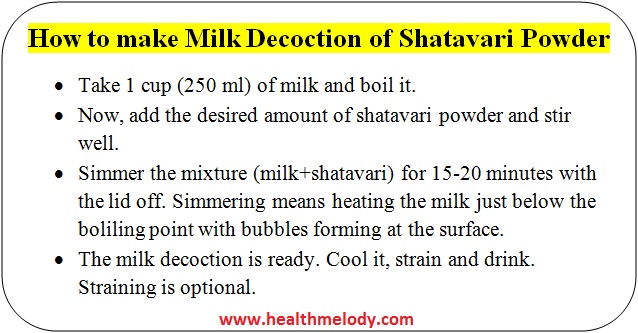
Shatavari to increase Breast Milk Supply
Use of shatavari to increase breast milk supply (quantity of milk and flow) in lactating mothers is well acknowledged by traditional Ayurveda doctors across the world. Shatavari is certainly the most popular galactagogue herb. A galactagogue is a substance that increases lactation in humans and other animals. You would hardly find an herbal lactation promoting medicine in the market that doesn’t contain shatavari.
A research article published in the Journal of Human Lactation, May 2013 acknowledged shatavari as one of the prominent herbal galactagogue.
Breast milk is the ideal first food for your baby. It contains all the vital nutrients and disease fighting substances to ensure optimum growth and development of your baby. Sometimes, after childbirth, the supply of breast milk gets reduced due to various reasons including hormonal imbalance, chronic illness, stress, fatigue and negative emotions.
Let us know Shatavari
Shatavari, also known as the Queen of herbs, is famous as a rejuvenating tonic for the female reproductive system. It nourishes, cleanses and assures smooth functioning of the woman’s reproductive system during all stages of her life:
- Puberty/ Menarche (beginning of the first menstruation cycle)
- Adulthood
- Motherhood/ Pregnancy
- Postpartum (after childbirth)
- Menopause
A recent paper published in the World Journal of Pharmacy and Pharmaceutical Sciences, Mar 2016 with the title- Shatavari: One Solution for Various Female Health Issues– highlighted shatavari as one of the most useful daily supplement for females.
Traditional Ayurveda doctors frequently use shatavari for below female reproductive system related problems:
- Infertility
- Threatened miscarriage
- Decreased libido (sex desire)
- Leukorrhea (leucorrhoea)
- Low breast milk supply
- Menopause symptoms
Being diuretic in nature, it helps reduce swelling and inflammation during menstrual periods by releasing out excessive water stored in the body.
In Sanskrit, Shatavari means “woman having 100 husbands.” It reflects fertility boosting ability of this amazing herb.
Some quick facts about shatavari:
It is a climbing medicinal plant that grows in different tropical and subtropical areas of Asia (particularly India, Nepal and Himalayas), Australia and Africa.
Sanskrit (Original) name- Shatavari
Botanical name- Asparagus racemosus
Other names- Wild asparagus, Indian asparagus, Asparagus roots, Hundred roots, Mother roots
Taste- Bitter, sweet
Quality (nature)- Unctuous, oily, heavy
Potency (energy)- Cold (it acts as a coolant in the digestive tract)
Body type (dosha)- Reduces pitta, reduces vata, increases kapha
According to Ayurveda, every human body is constituted of three vital energies (also known as dosha)- vata, pitta and kapha. Every individual has these three vital energies in a unique proportion. For good health, this balanced should remain unchanged. Any disruption in this balance is the root cause behind any illness or disease. Shatavari herb is extremely effective in restoring the dosha balance related to pitta.
Chemical Composition of Shatavari
Its major constituents include phyto-chemicals, polysaccharides, mucilage (water soluble fiber), proteins with traces of B complex vitamins and minerals like zinc and calcium.
Phyto-chemicals are naturally occurring plant chemicals with medicinal benefits- saponins, beta-sitosterol, flavonoids, alkaloids and tannins. These phyto-chemicals have potent hormonal balancing, anti-oxidant and anti-inflammatory properties.
Good to know
- Due to oily, unctuous nature, shatavari is believed to balance all the body fluids. It moisturizes the dried up membranes (inner linings) of various internal organs- mouth, throat, lungs, intestine and vagina- to relive inflammation and irritation.
- Systematic dryness is a symptom of aging process and shatavari counters dryness of the body. Hence, shatavari is a natural anti-aging herb as well.
Use of Shatavari to increase breast milk supply
- Promotes hormonal balance
Prolactin is a hormone that enables a woman to lactate after childbirth. In short, it is the most important hormone to ensure smooth flow of breast milk after pregnancy. Low level of prolactin hormone is one of the most common reasons for breast milk deficiency. Shatavari can help here by stimulating the female body to release more prolactin hormones.
A case study conducted by the researchers at the Institute of Post Graduate Ayurvedic Education and Research, Kolkata, India involved 60 lactating mothers in the age group 20 to 40 with breast milk deficiency. They were equally divided into two groups- one group was administered 3 grams per day of shatavari root powder while the other group was not given any supplement. After a period of 30 days, the level of prolactin hormones in the ladies of shatavari group was three times more than the non-shatavari group. Also, the overall satisfaction of mother and baby was way better in shatavari group. No potential side effects were observed.
Not only females, but, similar lactation effect was observed in other dairy animals as well. A review published in the Indian Journal of Traditional Knowledge, Jan 2013 highlighted the use of shatavari as a supplement to increase breast milk in dairy animals- cows, goats, buffaloes.
Apart from improving the supply, shatavari enhances the nutritional content of the breast milk as well.
- Relieves Postpartum (after childbirth) symptoms
The postpartum period is quite a difficult phase for any woman. Various symptoms of the postpartum period can have a negative impact on the breast milk supply.
How Shatavari is going to help here?
Well, as discussed earlier, shatavari is an ideal herb for all stages of a woman’s life including the postpartum period. Let us quickly go though the benefits of shatavari in the postpartum period:
- Trouble free involution of uterus to stop bleeding
- Thorough cleaning of the uterus after childbirth
- Due to sedative properties, it reduces stress, calms mind and promotes better sleep.
- Shatavari is a powerful adaptogen- improves body’s ability to adapt to stress. It nourishes and calms the nerves for a relaxed brain. Relieves insomnia, pain and spasms.
According to an animal (mice) study published in the Indian Journal of Experimental biology, June 2012- shatavari extracts have anti-stress activity.
- Relaxes symptoms like morning sickness and hot flashes.
- The mucilage (water soluble fiber) in shatavari is a gummy substance that coats the membrane (inner lining) of the digestive system to relieve dryness, irritation and inflammation. It would result in better digestion and smooth elimination of stool through bowel movements to relieve constipation.
How to consume and Dosage
The finger sized roots of shatavari plant are used for all the medicinal benefits. These shatavari roots are easily available in the form of:
- Powder (grounded roots)- The ideal dosage is between 3 to 6 grams per day. Consume it with warm milk or water after the meals. Divide the whole dosage in two installments and consume after meals- lunch and dinner. You may add a little honey or sugar for taste. For more info, check the manufacturer’s recommendations. Always start with less and gradually increase the dosage as per your comfort. For best results, consume milk decoction of shatavari roots. Milk decoction refers to boiling shatavari with milk.
A case study published in the magazine-International Journal of Pharmacognosy and Phytochemical Research, Vol 2, 2010 – concluded that the milk decoction of shatavari is more beneficial to increase the supply of breast milk than the water decoction. Female rats fed with milk decoction of shatavari produced 27% more breast milk than the rats fed with water decoction.
- Capsules- The ideal dosage is around 500-1000 mg of shatavari extracts per day. For more info, check the manufacturer’s instructions.
Which is better- Shatavari powder or Capsules?
Traditionally, shatavari powder is boiled with milk and consumed. It is the preferable way of consuming this herb because when you taste an herb before swallowing, the taste bud on your tongue sends signal to the brain and body metabolism immediately comes into action. It increases the activity of the herb somehow. Also, the per-dosage cost would be less in powder form.
On the contrary, gulping a capsule wouldn’t give any hint to the taste buds. Also, the per dosage cost would be more. But capsules have their own advantages as well. Consuming capsules is far more convenient and you would hardly miss a dose. Also, if you have always an issue with the taste of bitter herbs, then capsules are perfect for you. Shatavari tastes bitter to sweet, but, tolerable.
Other ways of consuming shatavari are:
- Shatavari Gulam (Ayurveda preparation in the form of herbal paste/ jam)
- Shatavari ghrita (Ayurveda preparation in the form of medicated ghee/ clarified butter)
- Shatavari churna (Herbal powder mix)
Side effects and Precautions
Shatavari is a natural herb- safe and well tolerated- for long term use without any significant adverse effects.
Do consider below precautionary measures before using shatavari:
- Shatavari is not suitable for people allergic to asparagus. If you experience skin rashes or breathing difficulties after consuming shatavari, then you are allergic to asparagus.
- Shatavari may have a diuretic effect to cause frequent urge for urination. Hence, if you are already consuming diuretic drugs (to release excess water and salt from the body), then shatavari can interfere with the activity of those drugs.
- Due to heavy, oily nature, shatavari increases kapha in the body. Hence, if you are dealing with a health condition related to excessive kapha, congestion or ama (body toxins), then shatavari can further worsen the symptoms.
- Shatavari is a phyto-estrogen rich herb. Phyto-estrogens are naturally occurring plant nutrients which exert an estrogen-like effect on the body. Hence, women with estrogen sensitivity should keep a close watch on their body weight and breast size during shatavari consumption. Sometimes, temporary symptoms like weight gain, breast tenderness and breast enlargement may happen due to increase in estrogen levels. Generally, these symptoms are temporary and goes un-noticed. But, doctor’s consultation is strictly advised if the symptoms persist.
In case of women with high estrogen, shatavari should be consumed in the first half of menstrual period (from day 1 to day 14) to minimize the related symptoms.
In short, if you are sceptical about any particular health condition, do consult your physician before consuming shatavari and always go slow-start with minimum dosage and gradually increase to the optimum level.
From where to buy
Always buy shatavari powder (or capsules) of a reputed brand for optimum results and safety. Buy it from an herbal store near to you otherwise check Amazon for some discounts:
If you are from USA, click here to check
If you are from UK, click here to check
If you are from India, click here to check
Conclusion
Shatavari is an everyday herbal supplement for women of all ages. It supports a healthy reproductive system, assists in hormonal balance and promotes breast milk supply. Being a natural herb, it takes time to show results. Hence, consume it regularly for several weeks to get significant results.
References
www.wjpps.com/download/article/1461994113.pdf
https://www.ncbi.nlm.nih.gov/pmc/articles/PMC3869575/
https://en.wikipedia.org/wiki/Asparagus_racemosus
http://www.yourhormones.info/Hormones/Prolactin.aspx
http://nopr.niscair.res.in/bitstream/123456789/15338/1/IJTK%2012(1)%209-17.pdf
http://nopr.niscair.res.in/bitstream/123456789/14191/1/IJEB%2050%286%29%20419-424.pdf
https://www.ncbi.nlm.nih.gov/pubmed/23468043
https://www.ncbi.nlm.nih.gov/pubmed/19652422
http://impactfactor.org/IJPPR/2/IJPPR,Vol2,Issue2,Article2.pdf





